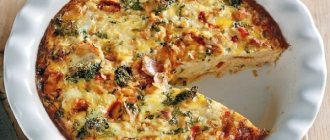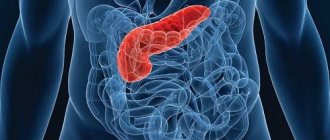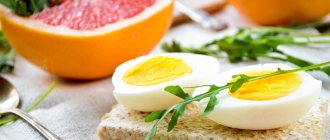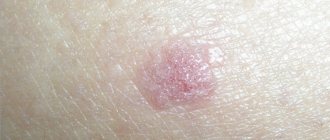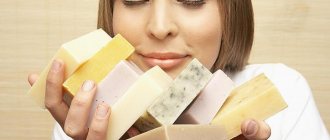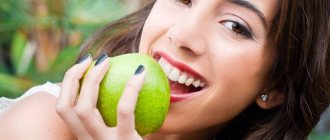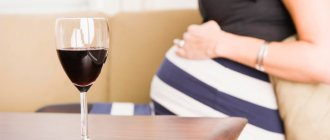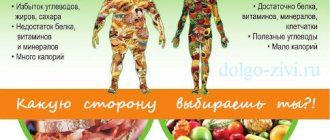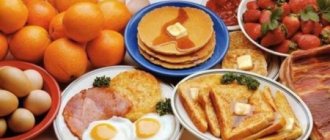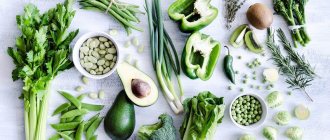Healthy digestion is possible only with the impeccable functioning of all organs of the gastrointestinal tract. And one of the most important roles in this process is given to the pancreas. The enzymes it produces complete the process of breaking down food, without which it is impossible to absorb nutrients from it. The endocrine function of the organ is also important: the gland produces insulin, without which there cannot be full metabolism.
Why should you not eat cookies if you have pancreatitis?
The gastroenterologist must tell the patient in great detail why he can no longer eat his favorite muffins, gingerbread cookies and pastries. There are several reasons:
- Sweet pastries have a very high calorie content.
- Not a single baked product today is made without food additives, such as flavor enhancers, leavening agents, dyes, flavors and citric acid.
- Baking almost always contains a lot of fat, since it will necessarily contain both vegetable oils and butter.
- Cookies contain a lot of sugar and fiber.
- Almost any sweet is made using chocolate, condensed milk, caramel, various fillings and other not very healthy products.
All of the above elements are completely undesirable for the pancreas, since in case of pancreatic diseases, food should be low in calories and without sugar. If this rule is not followed, then the pancreas must work hard, which will aggravate its already not very good condition.
How to eat with chronic pancreatitis
Compliance with the principles of a healthy diet is considered the main means of therapy for chronic pancreatitis. You need to eat 6 times a day, eating foods that facilitate digestion. The number of calories consumed should be correlated with the energy spent per day. Chronic pancreatitis requires a gentle method of cooking - foods must be boiled or used in a double boiler; under no circumstances should they be fried.
It is recommended to eat vegetables, non-acidic fruits, cereals, and you can drink tea, compotes, and jelly. As for meat products, you can eat lean meat - turkey, rabbit, beef, chicken - it contains the necessary amount of iron, phosphorus and vitamins and it corresponds to the parameters of products allowed in the diet.
New products should be introduced gradually, starting with a small dose, carefully monitoring the manifestation of side effects. If belching, nausea or other questionable symptoms appear, stop taking this product immediately.
During the period of exacerbation of pancreatitis, you need to remain calm and fast for one to three days. At such moments, only heavy drinking is allowed (rosehip decoction, still mineral water - “Essentuki”, “Slavyanovskaya” and others), green tea or jelly. After the pain has reduced, you can introduce lean boiled meat, cottage cheese, cheese, and vegetable broth soups into your diet.
In case of chronic pancreatitis, the following nutritional principles should be followed:
- the diet should consist mainly of protein foods, since protein is needed for the regeneration of damaged pancreatic cells;
- carbohydrates are needed, but only as part of cereals;
- Easily digestible carbohydrates should be limited, these include sugar, honey, and baked goods;
- meals should be fractional, you need to eat in small portions (you don’t need to overeat or starve, it’s better to have small snacks);
- the food consumed should not be hot or cold, so as not to irritate the mucous membranes;
- Food should be prepared by boiling, baking or steaming. Avoid eating fried, spicy, and canned foods.
- Smoking and drinking alcohol are excluded.
Allowed vegetables
Recommended vegetables for consumption are:
- pumpkin;
- beet;
- cauliflower;
- zucchini;
- carrot.
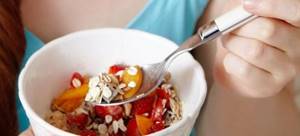
They should be subjected to heat treatment - boiled and steamed, stewed or baked. It is very good to eat them in the form of puree soups. Soup made from vegetable broth is an important nutritional element for pancreatitis. It’s good to mash potatoes, so they irritate the mucous membrane less. It is possible to add spinach or green pea puree soup to the menu.
During the period of remission, white cabbage and tomatoes are introduced into the diet, and bell peppers can also be consumed.
The list of prohibited products includes:
- radish;
- onion;
- garlic;
- turnip;
- eggplants.
Eggplants are not advisable due to their possible solanine content, and radishes, radishes and turnips are irritating to the digestive tract. Bell pepper is prohibited for use during an exacerbation due to its high content of ascorbic acid.
The list of foods allowed for pancreatitis includes a small assortment of fruits and berries:
- sweet apples;
- pears;
- bananas.
During remission of the disease, you can eat pomegranates, melon or watermelon (no more than a slice per day), avocado, papaya, plums, and persimmons.
You can eat berries only during the period of remission. Then you can eat cherries and lingonberries. You can cook compotes or make mousses based on strawberries, gooseberries, blueberries, currants, raspberries, and lingonberries. All permitted fresh fruits should be eaten in small quantities and the fruits should be ripe.
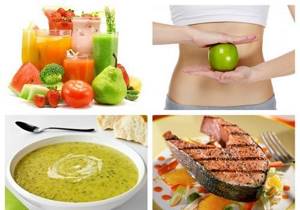
It is undesirable to eat dates, figs, and grapes, as they contain a lot of sugar and contribute to increased gas formation. Due to the fact that pancreatitis is often combined with gastritis or hepatitis, it is not recommended to eat lemons and oranges (they increase the synthesis of gastric juice). You also need to be careful when consuming some exotic fruits, such as coconut. It can be used during remission of the disease, but during acute pancreatitis or exacerbation of the chronic form - it is undesirable.
Permitted products include rabbit, beef, chicken, and turkey. You can use this meat to prepare soups, steam cutlets, rolls, bake or stew it.
For pancreatitis, the following are prohibited: pork, lamb, duck meat, and sausages, sausages, lard, kebabs and, in general, any fried meat.
It is not recommended to eat offal - liver (beef and chicken), chicken hearts, tongues (beef), as well as horse meat, as they are difficult to digest and cause increased production of enzymes.
Prohibited foods include canned fish, sushi, rolls, smoked meats, caviar and dishes with it, dried fish, any fatty seafood, squid (due to the fact that it is a strong allergen).
The least fatty varieties of fish are allowed for consumption: pollock, river perch, cod, haddock. Next - flounder, pike, burbot. The next most fatty foods are: sea bass, hake, mackerel, and herring.
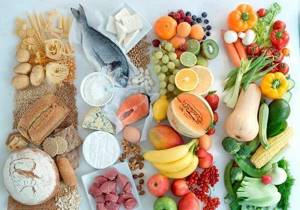
Fish with 8% fat content is allowed in small quantities during the remission stage. This includes: catfish, capelin, pink salmon, carp, tuna, bream. The fattest varieties of fish are: sturgeon, salmon, mackerel, salmon, saury, halibut.
You can eat seafood in small quantities - shrimp, mussels - because they contain a lot of protein and very little fat and carbohydrates.
It is recommended to prepare soufflés, casseroles, steamed cutlets from fish; you can bake or boil it.
Dairy
When dieting, you simply need to consume fermented milk products: kefir, fermented baked milk, low-fat cottage cheese, yogurt (homemade). Cow's milk is not allowed to be drunk - it is possible to use it as a component of one of the dishes, or add it to tea.
Goat's milk normalizes the functioning of the pancreas; it contains many trace elements and minerals, but it must be drunk boiled. Butter can be eaten, but in small quantities.
Prohibited for pancreatitis: ice cream, hard cheeses, liquid cottage cheese, condensed milk.
Porridges are very useful for pancreatitis, but not among all cereals. You can cook porridge from rice, oatmeal, semolina, buckwheat. Corn, millet, barley, pea, and pearl barley porridges are considered dangerous to eat because they are difficult to digest. Muesli or other breakfast cereals are undesirable, they irritate the intestines and may contain fruits that are undesirable for the body. All types of legumes (peas, beans, beans) are also prohibited for consumption due to difficulty in digestion.
It’s hard to imagine a daily menu without sweets, but if you have pancreatitis, you should not eat chocolate, condensed milk, or cream. If you want to treat yourself or your child to something sweet, it is better to make it yourself. You can eat marshmallows, jam, soufflé, marmalade, dry cookies, marshmallows, mousses, and jelly in small quantities.
Although most types of seasonings and spices are prohibited for pancreatitis, even natural ones, such as onions, garlic, horseradish, you can emphasize the taste with herbs - parsley, dill, basil, cumin, saffron. You can also add cinnamon and vanillin in small quantities to food.
Nuts and seeds
Walnuts and seeds contain a lot of protein and fat, and they can replace meat or fish. During periods of exacerbation of pancreatitis, it is better not to eat them. During remission, you can eat 3-5 nut kernels per day. The seeds are contraindicated when fried or in the form of kozinaki. It is acceptable to eat some raw seeds, or it is possible to use them in the form of homemade halva.
During the period of remission, you are allowed to eat a small amount of almonds, pistachios or peanuts. Nuts can also be added to ready-made dishes.
What can you drink
If you have pancreatitis, you are allowed to drink tea, preferably green; the brew should be without flavorings or dyes. You can also:
- jelly;
- fruit drinks;
- decoctions of chamomile, dill, rose hips;
- mineral water without gas (Narzan, Essentuki, Borjomi);
- apple and pumpkin juices diluted with water.
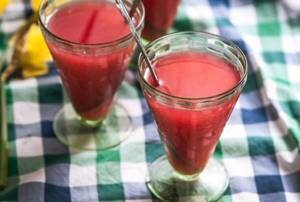
Kvass, undiluted juices, coffee, and carbonated drinks are prohibited. Alcohol is strictly prohibited, due to the fact that it causes spasms, and the enzymes that are inside begin to digest the organ.
What is the dosage rate for pancreatitis?
Certain types of cookies for pancreatitis are still allowed to be eaten, but there are strict limits. After the moment of exacerbation, after about 3-4 weeks, eating it is allowed, but only one piece per day. The size of the cookies themselves should be either small or medium.
When remission occurs and the disease temporarily recedes, a slight relaxation of the regimen in the form of 2 cookies per day is allowed.
This restriction must be adhered to for good health, as well as in order to eat it at least a little, but regularly. Still, it is worth remembering that pancreatitis is a serious disease, during which you should not allow excesses in nutrition.
About fruits
If during an exacerbation any fruits are prohibited, then two weeks after the exacerbation you can eat some of their types. Namely: bananas, watermelons, green apples, pineapples.
It is important to practice moderation.
If you want to play it safe and avoid fruits entirely, make sure to get your fiber from other sources.
Also read: Watermelon for pancreatitis, possible or not, recipes
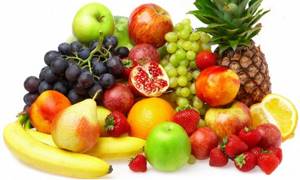
Fruits are included in the menu only after the condition has completely stabilized, and the introduction of fruits is done smoothly; first, fruit compotes and jelly are consumed.
Strictly prohibited fruits: mango, most citrus fruits, cherry plum, pear and plum.
Meal options
The diet necessary for pancreatitis does not have to be meager and tasteless. The range of foods available is wide enough to provide complete nutrition.
Here is a sample menu for one day:
- Breakfast - steamed egg white omelette, pureed oatmeal, tea
- Snack - low-fat cottage cheese, herbal decoction (optionally, rose hips)
- Lunch - boiled meat, rice soup, fruit jelly, wheat bread crackers
- Snack – baked apples
- Dinner - steamed carrot soufflé, boiled sea fish, tea
- At night - a glass of herbal decoction.
Recommendations for first courses: cereal soups, vegetable broths, light chicken soup. Omelettes, fish and steamed meats work well as second courses.
It is not necessary to leave yourself without desserts, but they should not only be tasty, but at the same time healthy. For example, jelly, pudding, baked vegetables or fruits, as well as purees from them. Remember to avoid sugar.
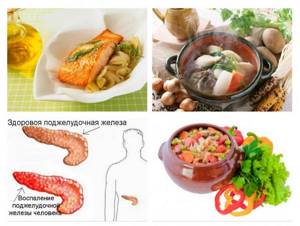
With any disease of the pancreas, its function changes: there is a disruption in the outflow of pancreatic juice containing the necessary enzymes into the digestive tract, as a result of which the digestive processes do not proceed properly and the body suffers from a lack of nutrients.
The most preferred drinks are fruit drinks, compotes, vegetable juices, specialized protein shakes, and herbal infusions.
Many people are interested in the question about Grinterol, an effective drug for dissolving gallstones. If you have pancreatitis, it is prohibited to take it. This is indicated in the instructions for the medicine.
Cookies for acute pancreatitis and exacerbation of chronic
If pancreatitis worsens, you should avoid cookies altogether; there is a very good treatment method - therapeutic fasting. After the exacerbation passes, that is, after about 3-4 weeks, you can include cookies in the form of biscuits or unsweetened crackers in the menu.
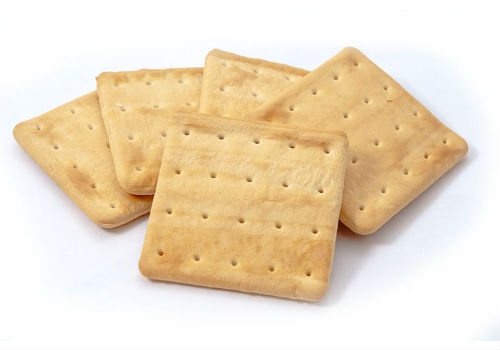
Be sure to pay attention to its composition, which should include only flour, water, eggs or egg powder, as well as sugar in minimal quantities. You need to be especially careful, since now manufacturers have begun to add vegetable oils and flavorings such as condensed milk to the composition of such cookies. Because of this, it makes sense to buy only packaged cookies, and not those sold by weight, since unscrupulous packers often do not provide complete information.
You can read the exact composition of the product on the packaging. “Aurora”, “Maria”, “Sweet Straw” are well suited for patients with pancreatitis. It is recommended to drink cookies even in minimal quantities with kefir or tea.
Attention! For those who are afraid to eat cookies with a sick pancreas, you can replace them with uneatable crackers; this will definitely not harm your health.
Diet for pancreatitis of the pancreas: rules
Inflammation of the pancreas can be chronic or acute. For a chronic disease, table No. 5 p according to Pevzner is indicated, or rather, its special version is No. 5 p. The diet for exacerbation of pancreatitis of the pancreas provides for more stringent restrictions (up to fasting or intravenous administration of nutrients) in order to alleviate the condition as quickly as possible. As soon as acute symptoms are relieved, the patient should be transferred to a nutritious but gentle diet.
- It is necessary to follow fractional meals - 5-6 times a day in small portions.
- It is recommended to boil or bake food.
- The use of pureed dishes is indicated. If your condition improves, you can switch to unprocessed food.
- The menu should contain about 200 g of animal protein. The amount of fat is limited to 50 g per day.
- Sugar consumption should not exceed 30−40 g per day.
- Carbohydrates can be consumed up to 350 g per day.
- Salt is limited to 3−5 g per day.
Consumption of cookies during chronic pancreatitis
During this period of illness, minor relaxations are allowed. Cookies can be consumed 1-2 per day, and its variety can be expanded. Instead of biscuits, you can eat sugar cookies such as “Yubileiny”, “For tea”, “For coffee”, “Milk”, oatmeal cookies and the like. You are allowed to prepare savory cookies at home; for this you do not need to add any fats or oils to the dough.
During this period of illness, cookies can be used as a breakfast or snack. If you prefer to buy it in a store, then pay attention to the fact that it does not contain any harmful additives such as flavors and dyes.
When making cookies yourself, you are allowed to add raisins, dried apricots, nuts, dried apples, prunes, just do not get carried away with such additives too much.
Attention! If, in addition to pancreatitis, you also suffer from diabetes, then you should choose cookies that do not contain sugar at all. When making your own cookies, sugar can be replaced with fructose.
Breaking out of fasting
The most useful foods in the treatment of pancreatic diseases are those rich in protein, but low in fats and carbohydrates, and soft in consistency. After fasting, these foods are gradually introduced. In this case, meals should be fractional, six times a day, the volume of food should not be large. Below is a list of dishes that can be eaten at this stage:
- well-cooked porridge with a slimy consistency in water (rice, barley, buckwheat, oatmeal);
- dried yesterday's bread, crackers, biscuits;
- ground meat, steamed or baked in foil (without crust), only dietary types of meat can be consumed: rabbit, chicken, beef, turkey;
- low-fat fish, also chopped and cooked in a gentle way;
- soft-boiled eggs or omelette without oil, cooked in a steam bath;
- a small amount of low-fat sour cream as an addition to soups or side dishes;
- purees and mousses from vegetables: carrots, beets, zucchini, potatoes, broccoli;
- baked sweet apples;
- jelly from fruits or berries.
We also recommend viewing: Pancreatic insufficiency
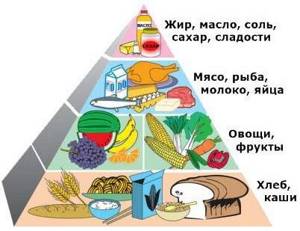
Zucchini is the most tender and easily digestible vegetable from the entire list of permitted ones. It is not without reason that it is recommended to be used as the first complementary food for babies. Zucchini puree is a great dish to relieve hunger. It does not burden the gastrointestinal tract, contains a sufficient amount of microelements and vitamins to improve the well-being of a weakened patient.
What cookies should you avoid completely if you have pancreatitis?
There are several types of cookies that should absolutely not be consumed if you have pancreatitis, as this can cause complications and worsen the condition.
- Butter. Butter cookies contain a large amount of fats and oils, and fatty foods are unacceptable for pancreatitis.
- Cookies with various additives. If you have pancreatitis, you should not eat cookies with icing and fillings, since additives that are quite harmful to health are most often added to them.
Attention! A useful alternative to glazed cookies can be ordinary biscuits, which can be smeared with jams or marmalade at home.
What bread to choose for pancreatitis?
A wide variety of bakery products are presented on the shelves of modern retail establishments. Therefore, patients suffering from pancreatic disease often cannot figure out what they are allowed to eat, and which types of bread and other flour products are best avoided.
Let's consider an approximate list of types of bread allowed for consumption in the presence of an inflammatory process in the cavity of the parenchymal gland:
- white varieties of bread,
- inconvenient pastries,
- loaves baked from rye flour,
- bran varieties of bread products,
- whole grain breads,
- breads.
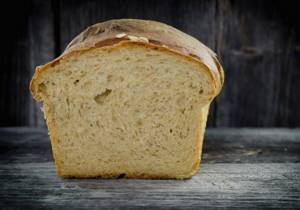
It is important to remember that freshly baked bread, despite its appetizing appearance and aroma, should not be consumed.
This is due to the fact that still warm bread contains too high a concentration of starch and yeast-type fungi, which have a negative effect on the stomach, provoking the onset of fermentation in it, and also contribute to the formation of an uncomfortable condition in the intestinal cavity. Therefore, even if a child suffering from this pathology asks for some warm bread, he should be protected from this, as from a potential danger of exacerbation.
Cookie recipes for patients with pancreatitis at home
In order not to frantically look for cookies in stores without harmful additives, it is much easier and cheaper to make them yourself at home.
- Regular cookies. Mix milk and sugar, add a drop of sunflower oil to the mixture. Add flour with soda and bring until smooth. The dough must be stirred until it stops sticking to your hands. After this, roll out the dough with a rolling pin to a thickness of approximately 2 mm, cut out the cookies using any cutters and bake in the oven until ready.
- Galette cookies. You will need 4 cups of premium flour, one pinch of baking soda, water, a tablespoon of salt. The ingredients are mixed until smooth, the dough is cut using molds and baked in the oven for 20 minutes.
- Oatmeal cookies for pancreatitis. To prepare oatmeal cookies, you will need a glass of regular oatmeal without additives (pre-soak in water), 0.5 cups of grain flour, chopped dried apples or fresh grated apple, egg white, cinnamon to taste, vanillin to taste, a little sugar or its substitute. Mix all ingredients, add water if necessary. Wrap the dough in film and place in the freezer for 30 minutes, shape and bake for 15 minutes. If desired, for pancreatitis, you can add raisins or nuts to cookies in small quantities.
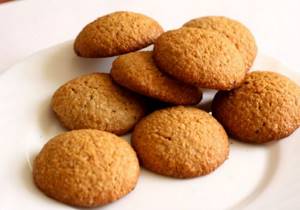
What other flour products can you eat if you have pancreatitis?
With the development of pancreatic disease, it is allowed to eat mainly the following types of bread:
It is not recommended to consume all other baked goods if the pancreas is damaged, as well as with the development of hepatosis, cirrhosis and irritable bowel syndrome; in particular, the following types of baked products should be removed from the diet:
- baking,
- Borodino bread,
- pie,
- pizza,
- filled pies,
- baked goods made from shortbread flour and premium flour,
- freshly baked products.
Bakery
As mentioned above, all baked goods with pancreatic disease should be excluded from the patient’s diet, especially:
- from yeast dough,
- butter,
- sandy,
- and also cakes,
- gingerbread and various types of cupcakes.
Consumption of the listed food products provokes the development of exacerbation of inflammatory pathology in the cavity of the parenchymal organ.
It is allowed to eat biscuits and homemade cookies, in the preparation of which a minimum amount of granulated sugar, fat and vegetable oil was used. It is also allowed to eat dried biscuits, cottage cheese cookies and cookies made from oatmeal. If pancreatic disease enters the acute stage, then the listed products must be excluded from the diet.
Pancakes, pancakes
It is not recommended to eat pancakes and pancakes if pancreatic pathology develops. But, for those who simply cannot do without this delicacy, an interesting recipe has been developed, according to which the harmfulness of the product to the parenchymal gland is reduced.
To prepare pancakes or pancakes you will need the following ingredients:
- liter of drinking water,
- 2 eggs,
- 150 gr. sunflower oil,
- 1.5-2 cups sifted flour,
- a teaspoon of slaked soda,
- salt and sugar are added to taste.
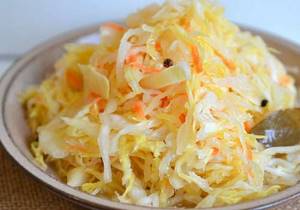
To prepare the dough, you need to place all the ingredients in a deep bowl and mix everything thoroughly. For pancakes you need a thick dough consistency, but for pancakes it is better to knead the dough thinner.
Before you start baking pancakes, grease the inner surface of the pan with sunflower oil and heat thoroughly. Bake the first thin pancake in oil, and then continue cooking without it and over low heat.
Do not forget that pancakes and pancakes are prohibited foods, both in the acute form of pancreatic disease and in its chronic form, so even with this method of cooking they must be consumed in very small quantities. It is quite difficult to say how many pancakes will not harm the body, since it depends on the severity of the pathology and the form of its development.
Have you been struggling with GASTRITIS and ULCERS for many years without success?
Head of the Institute: “You will be amazed at how easy it is to cure gastritis and ulcers simply by taking it every day.
Nutrition for gastritis and pancreatitis should be given special attention, since the general condition of the patient and his recovery will depend on this. Gastritis affects the gastric mucosa, pancreatitis affects the pancreas. The diet for people suffering from these diseases is designed in such a way as not to harm the mucous membrane and relieve the pancreas as much as possible.
Our readers successfully use Monastic Tea to treat gastritis and ulcers. Seeing how popular this product is, we decided to bring it to your attention. Read more here...

Features of nutrition for gastritis and pancreatitis
Pancreatitis and gastritis are different diseases, but the diet for this group of patients is prescribed the same, with only slight differences (with pancreatitis, nutrition has more restrictions). If you had to face this trouble, then you need to remember that there is simply no diet as such, but a way of life in which you have to give up your usual foods. There is a misconception that eating right is almost the same as fasting. This is not at all true; with pancreatitis and gastritis, the method of cooking changes, but not the amount of food, so with a balanced diet a person does not feel hungry.
It is important to remember that you need to eat in small portions, but often, at least 5-6 times a day. It is necessary to chew food very thoroughly - then the load on the stomach and pancreas will be minimal. The last meal should be 2-3 hours before bedtime. You should not eat fried food; it is replaced with stewed, boiled and steamed food, as well as baked food. When cooking in the oven, you must use foil or a baking sleeve; there should be no fried crusts. For patients with pancreatitis and gastritis, the best friend is a double boiler, since with this method of cooking all vitamins are preserved, the food turns out juicy and tasty.
Meat can be eaten, but it should not be fatty, so pork is replaced with the most tender veal, chicken and turkey. Beef is quite tough meat, so it is not recommended to eat it, especially for patients with pancreatitis. For gastritis, a small piece of boiled beef will not hurt. Duck and goose meat should not be consumed, as it is quite fatty and difficult to digest. With gastritis, broths are not only possible, but also necessary, but with pancreatitis they are strictly prohibited. Saturated concentrated meat broth can cause exacerbation of pancreatitis, so it is recommended to use only light vegetable broths. It is advisable to steam or boil the meat; if baked, then only in foil.
Fresh fruits and vegetables should not be consumed, as they contain juices that irritate the mucous membrane. With gastritis with high acidity, it is forbidden to eat fruits, even boiled, otherwise the acid they contain will cause an attack of heartburn and irritation of the mucous membrane. Patients with pancreatitis and gastritis with low acidity can eat boiled fruits. If you have inflammation of the pancreas and gall bladder (cholecystitis), you should not eat vegetables rich in fiber, as this food puts a lot of stress on the organs. But for inflammation of the gastric mucosa, boiled pumpkin or zucchini is just right. If you have pancreatitis, you should not eat cabbage, either raw or boiled. If you suffer from a stomach lining problem, then steamed broccoli or cauliflower is what you need. But it is not recommended to consume raw and sauerkraut, as it can cause an exacerbation of the disease.
Permitted and prohibited products
When creating a menu, it is important to take into account not only the disease, but also the individual characteristics of the person. While some people can eat dairy products, they are contraindicated for others. Don't forget about allergic reactions to honey and eggs. It happens that when taking foods allowed by the diet, heaviness and discomfort often occur, and slight nausea appears. Such food should be excluded from the daily diet.
- Smoked meats and pickles.
- Mushrooms in any form, as they are quite heavy foods.
- Legumes (boiled green beans are allowed for gastritis).
- Corn.
- Tomatoes in any form.
- Fresh vegetables and fruits.
- Fatty meats.
- Alcohol.
- Spices.
- Sorrel, lettuce, radish.
- Nuts and seeds.
- Carbonated drinks.
- Baked goods and sweet pastries.
- Chocolate and candies.
- Buckwheat, barley, oatmeal.
- Unpolished rice.
- Whole grain bread without yeast.
- Boiled eggs (poached).
- Low-fat boiled or steamed fish.
- Boiled potatoes.
- Vegetable stew.
- Dried fruits compote.
- Honey.
- Pasta in minimal quantities.
- Low-fat dairy products.
- Refined vegetable oil.
Acute form or exacerbation of chronic inflammation
When a period of exacerbation of chronic inflammation of the pancreas occurs or an acute form of the disease manifests itself, cookies must be completely abandoned. At this time, the specialist prescribes a strict diet to quickly stabilize the patient’s condition. In addition, dietary restrictions are a necessary measure to maintain the normal condition of the diseased organ. Abuse of prohibited products contributes to the development of various complications.
It is permissible to expand the diet with biscuits no earlier than a month after the first exacerbation. Moreover, when choosing sweets, it is important to carefully study the ingredients from which they are prepared. The standard composition of biscuits should include flour, sugar, eggs and water, but modern recipes may vary and contain additives, flavorings and other prohibited fillers.
Diet for pancreatitis of the pancreas: list of products
When following diet No. 5, animal fats are excluded. You are allowed to consume no more than 25 g of butter or vegetable oils per day. You cannot eat sour vegetables and fruits, other fiber-rich foods, fast food, fried, fatty, spicy foods, sweets and baked goods. Here is a detailed list of prohibited foods on a diet for inflammation of the pancreas:
- alcohol;
- fried foods;
- pork, lard, lamb, duck, goose, fatty chicken;
- smoked meats, sausages, sausages;
- fast food;
- fatty fish;
- meat, fish and mushroom soups;
- high-fat dairy products (cheeses, sour cream, full-fat milk);
- canned food and pickles;
- spicy food, sauces, spices;
- desserts and sweet soda;
- sweet and sour fruits and berries: grapes, pears, citrus fruits, figs, dates, pomegranate, kiwi, cranberries, cherries
- vegetables containing large amounts of fiber and purines: radish, radish, garlic, horseradish, spinach, cabbage, onions and green onions, sorrel;
- coffee, cocoa, strong black tea;
- fresh bread, pastries;
- legumes;
- nuts;
- mushrooms;
- fried and hard-boiled eggs.
Period of remission of the chronic form
When the symptoms of chronic pancreatitis recede or are weakened to a significant extent, it is possible to diversify the daily diet. The list of permitted types of cookies is also increasing:
- Biscuits.
- Simple sugar cookies (“Jubilee”, “Sugar”, “For Coffee”).
- Oatmeal cookies are most preferable because they contain healthy oat flakes.
- Homemade cookies (not buttery) with low fat content in the dough.
If diabetes mellitus develops against the background of pancreatitis, you can only eat diabetic cookies, where sugar is replaced with fructose or is completely absent.
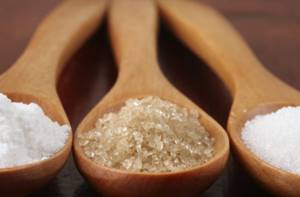
The best option would be to make your own cookies from natural ingredients, which will definitely not contain dangerous fillers and preservatives.
The need to follow a diet
A competent diet and patient discipline are the basis for successful treatment of pancreatitis. You will have to follow a strict diet for many months. But, if you are patient, this path provides a chance to restore full functioning of the pancreas and even cure pancreatitis forever.
Dietary nutrition is the main aspect in the complex therapy of pancreatitis. Without this, it is impossible to stop the intoxication of the body by pancreatic enzymes. A break in the functioning of the gastrointestinal tract and the subsequent gentle regime give time to stop pathological processes, prevent pancreatic juice from starting to digest the pancreas itself and lead to irreversible processes in the tissues.
Cookie consumption rate: biscuits, sugar, homemade
Despite the fact that it is permissible to eat cookies during pancreatitis, there are strict limits on their quantity. After an exacerbation of the chronic form or manifestation of acute inflammation of the pancreas, after 3 - 4 weeks it is allowed to eat no more than 1 cookie per day. Naturally, it is important to take into account the size; they should not exceed average.
During the period of remission, when the patient’s diet is significantly expanded, experts recommend eating no more than 1 - 2 pieces per day. Strict restrictions will ensure safe consumption for the body, and will also allow you to eat cookies, albeit little by little, but regularly. Pancreatitis is a serious disease and patients must take the advice of doctors responsibly and adhere to the specified nutritional rules.
What happens if you don't follow a diet
Of course, the main thing for recovery is to treat the disease according to the drug course prescribed by the doctor. But if the proper nutritional plan is not followed, then the result may never be achieved.
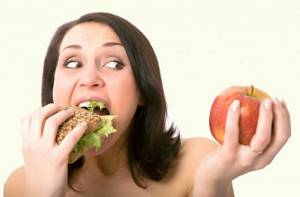
In case of non-compliance with the diet during acute pancreatitis or exacerbation of chronic pancreatitis, various complications arise.
The juices produced by the gland will not function properly, gradually corrode the organ itself and change the structure of its tissues. This can trigger diabetes if insulin production stops.
The process of digesting food slows down due to general disorders of the gastrointestinal tract. The body begins to lack lipocaine, and the so-called fatty degeneration begins in the liver. Ultimately, this can lead to venous thrombosis and cancer.
Therefore, we strongly recommend following a diet, especially since it can be easily varied with a wide selection of permitted foods. And giving up fatty and fried foods will benefit not only the gland, but the entire body as a whole.
In rare cases, the doctor may prescribe temporary therapeutic fasting. However, you should never practice it without the advice of a doctor.
Now you know what your diet should be. The most important thing to remember is that if health problems arise while on a diet, you should consult a doctor.
Most likely, you have chosen the wrong diet. The doctor’s recommendations will help you decide on a specific diet, thereby helping to get rid of the symptoms of the disease. Remember that nutrition alone cannot cure this disease; diet is prescribed as maintenance therapy.
Homemade Cookie Recipes
Taking care of the health of the body and the pancreas in particular will be complete if the dishes are prepared independently. Homemade cookies will be fresh, contain the optimal combination of ingredients and will bring pleasure and sometimes benefit.
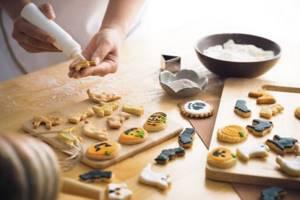
Below are several recipes for homemade sweets that are allowed for this disease after an acute form or during a period of chronic remission.
Simple cookies
The composition of these cookies includes 300 grams of flour, one chicken egg, one tablespoon each of sugar and vegetable oil, one pinch of soda.
- First, beat eggs and sugar, then pour in milk and sunflower oil.
- When the mass acquires a uniform consistency, add flour, previously mixed with soda, and mix everything thoroughly again.
- The dough will be ready when it stops sticking to your hands.
- Afterwards, it needs to be rolled out to a thickness of 2 mm and squeezed out using any molds. Bake cookies at 210° for 5 minutes.
If your diet allows, you can add natural flavors, berries, and chopped nuts to the cookies, since the recipe is basic. The sweet can be consumed several hours after preparation. It is not recommended to eat it hot, immediately after removing it from the oven, so as not to cause unnecessary stress on the pancreas.
Galette cookies
The composition includes: premium flour – 4 cups; baking soda – 1 pinch; filtered water at room temperature – 400 ml; salt – 1 tablespoon.
- The usual dough is kneaded, rolled out and cut into molds.
- Bake in the oven for 20 minutes.
These biscuits are very tasty to eat with cheese. If permissible, you can add a little filling to the dough, sprinkle the finished cookies with a small amount of sugar (a few minutes before they are ready or hot). To add sweetness, you can spread it with homemade jam, but not store-bought jam.
Diet for pancreatitis of the pancreas: menu
Diet table No. 5 has two types. The second (No. 5 p) is designed specifically for patients with acute pancreatitis or for periods of exacerbation of a chronic disease. An approximate menu for a diet for pancreatitis of the pancreas looks like this:
- Breakfast: oatmeal with water, cottage cheese casserole, weak tea.
- Second breakfast: natural applesauce from non-acidic varieties.
- Lunch: creamy vegetable soup, baked beef, berry jelly.
- Afternoon snack: dry biscuits, carrot juice.
- Dinner: steamed fish cutlets with boiled Brussels sprouts, low-fat kefir.
Homemade recipes for pancreatitis
For the “Dietary” pie with fruits and berries you will need:
- granulated sugar - 3 or 4 tbsp. spoons;
- cinnamon (to taste);
- a glass of flour;
- a glass of oatmeal;
- a teaspoon of baking powder;
- salt (pinch);
- soda - a quarter of a teaspoon;
- yogurt of minimal fat content - 200 g (you can take either natural or, for example, blueberry);
- fruits and berries (both fresh and frozen, only after defrosting them).
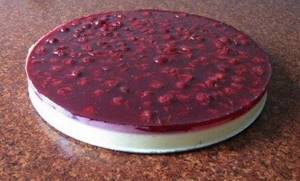
This homemade recipe for pancreatitis suggests banana, peaches and half a cup of berries. Fill the bottom of the baking dish with fruit and sprinkle the berries on top. Add a spoonful of sugar and cinnamon to taste on top. For the dough, in a separate bowl, mix oatmeal with flour, 2 tablespoons of sugar, baking powder, soda and salt. Add yogurt and stir everything. Spread the resulting mixture onto the fruit. If necessary, sprinkle sugar on top, but not necessary. Preheat the oven. Bake the pie for 40-50 minutes until done.
Bread pudding recipe
Cut half a loaf of stale rye or wheat bread into slices. Place 3-4 thinly sliced apples on top and sprinkle with a handful of raisins. Beat 3 eggs with half a glass of sugar, gradually adding 700 ml of milk. Pour the resulting liquid over the bread and apples, stir. Let it sit for 2 hours and soak. Spread the top with a spoon. Bake in the oven until done.
Pancreatitis is a complex disease of the pancreas. Accompanied by unpleasant pain attacks and nausea. To restore the functioning of a damaged organ, the patient must follow a diet. Food should not provoke new attacks of inflammation of the organ; it must maintain the required amount of vitamins and beneficial microelements. An unusual way of preparing dishes, the exclusion of favorite foods is stressful for patients, and the complete exclusion of treats in such a situation seems terrible.
It’s worth noting right away that ideally, there should be no sugar in the patient’s diet. If it’s hard to refuse and you really want it, we’ll look for an alternative. The amount of tasty foods consumed and the types of permitted foods depend on the complexity of the disease.
Cakes, pies and pancakes for pancreatitis

Pancreatitis in the modern world often occurs at 35-45 years of age. People of this age are active and productive. It is difficult for them to assess the severity of chronic pathology. And some patients tend to forget about the need for a constant diet. It's a pity. After all, most often it is poor nutrition that provokes a new attack of the disease. In this article we will talk about how various baked goods affect the course of this disease.
What is allowed in the acute form of the disease?
Glucose and the pancreas get along well in a healthy body. The sugar included in the composition forces the gland to produce insulin, and the load on the unhealthy organ increases. During an exacerbation of pancreatitis, it is necessary to reduce the load, dessert is completely excluded from the patient’s diet, even consuming a small amount of sugar is unacceptable.
The first days after the attack has stopped, therapeutic fasting is useful, which is accompanied by taking a large amount of liquid. Gradually, light protein products (poultry, veal, fish) are included in the menu. After a month, the strict diet can be softened. Jelly, puddings, and fruit mousses are added to the menu. Dishes are prepared with a sugar substitute. The inclusion of other sweet products is not permitted.
Principles of nutrition
Interests related to nutritional correction during the inflammatory process in the pancreas are well founded. They are due to the fact that diet at this time becomes one of the most necessary therapeutic agents. All patients suffering from unbearable pain in the pancreas have to completely reconsider their lifestyle, as well as their regimen and diet.
In this regard, experts are most often interested in what foods can provoke unpleasant symptoms and therefore must be excluded from the daily menu, and what can be eaten without fear. Such information for a person experiencing frequent pain in the pancreas should always be at hand, and it is best to memorize it, so that if painful sensations appear, they can urgently adjust the daily diet so that the functioning of the pancreas is stabilized.
There are several nutritional principles that are considered basic for diseases of the pancreas. All of them are practically the same as with other pathologies of the digestive system. To prepare and consume dishes from the diet menu, experts strongly advise applying the following general rules:
- When eating, you should keep it small. This principle is to eat in minimal portions, but at very short intervals. The break between meals should not be more than three hours, which will prevent the feeling of hunger.
- All prepared food should be served to a patient with a diagnosed inflammatory process in the pancreas exclusively warm. Its temperature should not exceed room temperature. Eating hot and cold foods is strictly prohibited, as they can cause thermal damage to the mucous membrane of the digestive organs.
- Culinary processing can be carried out only in one of three ways - boiling in water or steaming, stewing, and baking in the oven. But cooking using the latter method requires observing one mandatory nuance - the golden crust must be removed before serving the dish.
Also, the fundamentally important rules of the diet prescribed in cases where the pancreas hurts include a categorical ban on the consumption of fats and carbohydrates, especially during an exacerbation. Fried and fatty foods should be excluded from the daily menu, as they provoke increased secretion, which, accordingly, increases negative symptoms. Hot and spicy foods are also unacceptable.
Diet rules during relapse
When an attack of pathology begins unexpectedly, the pain is often simply unbearable. At this time, all thoughts about food fade into the background. A person has only one desire - to relieve acute painful sensations as quickly as possible. As doctors note, the fastest results can be achieved only with the help of medications. But they will not play a big role if a sick person, after taking a pill recommended by a doctor and feeling noticeable relief, immediately “rushes to the refrigerator” to appease his awakening hunger. This will only make the pathological situation worse.
In order to prevent this, when an acute attack approaches, it is necessary to follow some rules. Those people who know first-hand what pancreatic pain is are familiar with them. For those patients who first encountered pathological changes in this insidious gland, it is necessary to talk about the basic rules of behavior in the very first days. Only strict adherence to them will help you quickly forget about acute pain and other unpleasant symptoms that accompany inflammation of the pancreas. For pain in the pancreas, the diet in the very first few days, until the attending physician finds out the cause that provoked the exacerbation, will be as follows:
- Complete fasting is required for three days from the onset of the attack.
- To maintain the water-salt balance in the body during this period, you should drink Borjomi mineral water. But here there are the necessary conditions - there must be no gases in it and it must be at room temperature.
- The amount of liquid consumed per day should not exceed one and a half liters (in addition to mineral water, it is recommended to drink half a liter of unsweetened rose hip decoction). A single dose of liquid should be no more than 2/3 glass.
Only from the third day are patients allowed to gradually introduce some low-calorie foods into their diet. But salt, as well as products that stimulate gas formation or cause increased secretion, are strictly prohibited.
Dessert during remission
When the disease enters a long-term quiet phase, the list of permitted treats is gradually expanded. When selecting products, caution is strictly observed, certain requirements:
- Preference should be given to homemade sweet products. They contain fewer additives that are hazardous to health.
- Without being able to cook it yourself, when choosing in a store, read the label. The content of flavors, preservatives, and dyes will negatively affect the diseased organ.
- When preparing treats, include fructose in the composition. Even if the patient does not develop diabetes mellitus due to the disease, it is not worth provoking the organ to secrete insulin in order to process glucose.
- Don't forget about your diet. Your favorite delicacies should not contain fat, spices, or alcohol.
- Keep an eye on the expiration date. Expired, dried, yesterday's food is not suitable for a healthy body, and for a sick organ it is stressful.
- Know your limits. Don't overeat.
Return to contents
Acceptable food
The products described below should be consumed rarely. And if possible, completely exclude it from your diet. Because they are hard on the stomach and overly strain the pancreas. When consuming such products, malfunctions of the pancreas occur. Such products include:
Sweets (limit)
Product Proteins, (g) Fats, (g) Carbohydrates, (g) Calorie content, kilocalories Note Marmalade 0.90 g 0.94 g 74.58 g 304.77 kcal (1275 kJ) A few pieces a day Waffles without filling 3.20 g 2.80 g 81.00 g 342.00 kcal (1431 kJ) Reduce their consumption to approximately 100 grams per day for an adult of average build Apricot jam 0.00 g 0.00 g 62.00 g 236.00 kcal (987 kJ) You can eat a maximum of three teaspoons of jam per day. Fats, eggs (limit)
Product Proteins, (g) Fats, (g) Carbohydrates, (g) Calorie content, kilocalories Note Butter 60% 0.50 g 7.00 g 1.20 g 547.00 kcal (2289 kJ) A single serving of porridge or pasta should contain no more than a third of a teaspoon Olive oil 0.00 g 99.80 g 0.00 g 898.00 kcal (3759 kJ) It is useful to drink a tablespoon. Cedar oil 0.00 g 99.92 g 0.00 g 915.20 kcal (3831 kJ) Drink a tablespoon 30 minutes before meals Boiled egg 12.70 g 10.63 g 0.93 g 148.05 kcal (619 kJ) Egg whites are very well digestible; yolks should be limited due to their high fat content. No more than 2-3 per week Spices (limit)
Product Proteins, (g) Fats, (g) Carbohydrates, (g) Calorie content, kilocalories Note Sea salt 1.00 g 1.00 g 1.00 g 1.00 kcal (4 kJ) Lightly add salt to cooked dishes Cinnamon 3.81 g 2.00 g 48.98 g 248.75 kcal (1041 kJ) Use in very small quantities. If you have any concerns, cancel. Vanillin 0.17 g 10.42 g 22.07 359.00 kcal (1502 kJ) Use in very small quantities. If you have any concerns, cancel.
What are the allowed treats for pancreatitis?
People with pancreatitis need to replace their favorite sweet foods with foods with acceptable sugar content. What sweets are best?
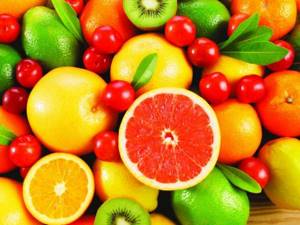
Give preference to unsweetened fruits.
You should give preference to fruits, but not sweet ones. Compotes, jelly, jelly, jam without added sugar are suitable for the patient’s diet menu. The full list of permitted products is as follows:
- marmalade, marshmallows, marshmallows;
- biscuits, baked goods made from soft dough, bagels;
- drying, candied fruits;
- jam, jam, marmalade, honey;
- meringue, protein soufflé.
Watch the composition of treats. Jam, marmalade, and soufflé should be prepared using fructose. Try to protect yourself from consuming glucose. Bagels are considered the most dietary sweet. Rusks and bagels are allowed even during a severe hunger strike in the acute period. You need to be careful when buying bagels in a store; your favorite delicacy may contain fat. It is preferable to eat them soft, so a homemade recipe is the best way not to harm your health.
The list includes dishes that do not contain fat, but they should be introduced into the diet gradually. The maximum daily dose of treats is 50 grams. It is necessary to monitor the body’s reaction to each product separately; in case of exacerbation, the intake of goodies is stopped. Remember, before introducing new foods into your diet, consult your doctor.
What and how to eat in the early period of exacerbation
The question of when the pancreas hurts and what you can eat interests many. It becomes especially relevant when the unpleasant symptoms accompanying the inflammatory process in the pancreas begin to subside. And the sick person awakens a natural feeling of hunger.
Each specific patient should ask their attending physician about what they can eat at this time, who will select a therapeutic diet in accordance with the nuances of the disease.
There is also a generally recommended list of permitted products:
- The basis of the diet is liquid porridges, slimy soups and jelly. This requirement is due to the fact that these dishes have enveloping properties, and therefore are able to effectively protect the digestive organs from thermal, mechanical or chemical external influences.
- Gradually, lean meat and fish are being introduced into the daily menu. But dishes prepared from these products should not contain large pieces, that is, they should be thoroughly chopped either immediately before cooking or after the dish is ready;
- It is acceptable to use cereals (except millet) and durum pasta as side dishes or as a base for slimy soups.
- Vegetables, except radishes, radishes, and white cabbage, must be served in a puree state. You can also prepare them in the form of casseroles or fresh salads. But in these cases, one should take into account the nuance that all pieces must have a minimum size (it is best to grind them on a grater).
- For inflammation of the pancreas, it is recommended to eat dishes made from cottage cheese, souffles and casseroles. But this fermented milk product must be extremely fresh and not sour, so it is best to make it yourself.
- Eggs are eaten only soft-boiled or in the form of a steamed protein omelet without any additives.
Before going to bed during a period of subsiding exacerbation, you should definitely drink a glass of kefir, yogurt or fermented baked milk. This will help you avoid feeling hungry at night. Such nutrition during the period of attenuation of the exacerbation will help to achieve the gradual complete disappearance of the unpleasant clinical manifestations of the scourge.
Prohibited Products
If the pancreas is damaged, sweet dishes that contain sugar and fat are considered prohibited. List of the most dangerous to health:
- chocolates, caramel;
- Everyone’s favorite ice cream, halva, condensed milk in any form is prohibited;
- flour is prohibited;
- cake, cookies, gingerbread;
- grapes, dates, figs are on the list of prohibitions.
The above products cannot be eaten as an independent dish and cannot be included in a recipe for cooking. Chocolate, flour, and sweets can harm the organ during the chronic course of the disease; during the acute period, they are dangerous to health.
Sweets for pancreatitis are not the most suitable food option. But you can always find an alternative to your usual treats and not deprive yourself of small joys to the detriment of your health. Eating lightly and drinking plenty of fluids is the key to health.
Allowed and recommended foods
To reduce the chemical and mechanical load on the pancreas, a special diet is prescribed. Such a diet should be aimed at preventing the development of certain complications and stabilizing the condition. It is based on increasing the protein content to 130 g. Potassium-rich foods are included in the diet. Such products include
Flour and sweet products (possible)
Product Proteins, (g) Fats, (g) Carbohydrates, (g) Calorie content, kilocalories Note Wheat bread 8.15 g 1.73 g 52.18 g 245.16 kcal (1026 kJ) Yesterday's Biscuits 9.01 g 9.14 g 66.40 g 390.77 kcal (1635 kJ) Consume for the first breakfast Simple bagels 10.40 g 1.30 g 64.16 g 313.67 kcal (1313 kJ) Bagels are best eaten soft. For this product, you can soak it in weak tea or compote. Wheat crackers 11.20 g 1.40 g 72.40 g 331.00 kcal (1385 kJ) Rusks should be without any spices or seasonings Jelly 7.36 g 0.59 g 32.17 g 154.14 kcal (645 kJ) The norm for a serving of any jelly per serving is no more than 150 grams. Soups (possible)
Product Proteins, (g) Fats, (g) Carbohydrates, (g) Calorie content, kilocalories Note Oatmeal soup 2.45 g 2.65 g 19.37 g 109.17 kcal (456 kJ) The finished dish should be homogeneous, without lumps. Rice soup 1.92 g 2.04 g 7.11 g 51.60 kcal (215 kJ) Single serving: rice – 40g, water – 200g, meat broth – 300g, carrots – 10g, onions – 7g. Barley soup 1.87 g 1.30 g 6.61 g 49.25 kcal (206 kJ) Serve soup only warm Vegetable soup 2.98 g 2.45 g 7.23 g 46.73 kcal (195 kJ) Serve soup only warm Fruits, vegetables (possible)
Product Proteins, (g) Fats, (g) Carbohydrates, (g) Calorie content, kilocalories Note Zucchini 0.82 g 0.70 g 5.99 g 30.56 kcal (127 kJ) Can be consumed either baked, stewed or boiled. Cauliflower 2.80 g 0.43 g 4.72 g 33.99 kcal (142 kJ) It is advisable that it be stewed or boiled Carrot 41.62 g 5.02 g 12.06 41.07 kcal (171 kJ) Carrot puree cooked either steamed or in a slow cooker is very healthy. Potato 2.74 g 1.35 g 19.81 g 85.57 kcal (358 kJ) Bake in the oven or boil, without adding spices. It is useful to drink a glass of potato juice daily two hours before meals - 100-200 ml. Baked apples 6.96 g 0.53 g 24.07 88.04 kcal (368 kJ) You only need to choose varieties with green skin. Dairy products (possible)
Product Proteins, (g) Fats, (g) Carbohydrates, (g) Calorie content, kilocalories Note Hard cheese 30% 17.90 g 13.50 g 0.00 g 224.00 kcal (937 kJ) Low-fat varieties include the following: Gaudette; tofu (soy); chechil; ricotta; feta Yogurt 0% 3.86 g 0.25 g 8.33 g 58.51 kcal (244 kJ) It is better to use homemade yogurt Milk 1% 2.40 g 1.45 g 4.70 g 39.00 kcal (163 kJ) You can drink milk after boiling it first Drinks (possible)
Product Proteins, (g) Fats, (g) Carbohydrates, (g) Calorie content, kilocalories Note Banana juice 0.02 g 0.01 g 13.22 g 50.40 kcal (210 kJ) Only freshly squeezed juices are allowed Carrot juice 0.98 g 0.11 g 9.49 g 40.42 kcal (169 kJ) The juice must be without added sugar or other impurities. Strawberry juice 0.30 g 0.20 g 9.75 g 41.00 kcal (171 kJ) You can consume freshly squeezed juice only after diluting it with water in a 1:1 ratio. Kissel 0.49 g 0.17 g 39.26 g 152.82 kcal (639 kJ) You can take 200 ml several times a day (3-4). Hibiscus 1.43 g 1.26 g 6.03 g 37.92 kcal (158 kJ) No more than one or two times a day
Recipes
Even following the dietary principles of nutrition, you can prepare delicious baking options based on the products allowed under diet No. 5.
Cookie
To prepare homemade oatmeal cookies, mix 1.5 cups of oatmeal, 200 g of wheat flour, 100 g of sugar, 1 tsp. baking powder, 100 g softened butter, 1 egg.
Form the dough into balls, place on a baking sheet lined with parchment, bake in an oven preheated to 180°C until golden brown for 15-20 minutes.
To prepare the base for bagels using cottage cheese dough, you need to beat 200 g of softened butter, 200 g of low-fat cottage cheese, 2 tbsp. l. sugar and a pinch of salt, add about 320 g of flour. Chill the dough for 1 hour, then shape into bagels. The filling can be grated apples or unsweetened jam. Bake at 180°C for 30 minutes.
Pies for pancreatitis are prepared from biscuit or low-fat shortcrust pastry, with fruits or berries.
Pie
Pies for pancreatitis are prepared from biscuit or low-fat shortcrust pastry, with fruits or berries. For French quiche, take 250 g of sifted flour, a pinch of salt, 125 g of chilled butter, grated on a coarse grater, 1 egg, 3 tbsp. l. ice water.
The base is frozen in the refrigerator for about 30 minutes, a fruit filling is placed on it, for example, sweet apples cut into cubes (3-4 pieces), filled with cream (200 g of sour cream, 150 g of sugar, 1 egg, 2 tablespoons of flour). Bake for about 1 hour at 180°C.
Decoctions, tinctures of herbs and mixtures for the pancreas
Common and readily available herbs for the treatment and prevention of pancreatic diseases are presented below. These herbs have protective and antioxidant properties.
- Birch
- Celandine
- St. John's wort
- Elecampane
- Burdock
- Dandelion
- Chicory
- Mint
- Linen
- Dill
- Plantain
- Sagebrush
- Corn
- galangal
To improve the general condition of these herbs, decoctions, mixtures and tinctures are prepared. Anti-inflammatory decoction
- To prepare an effective decoction we take in equal proportions herbs listed below:
- Elecampane - 1 tbsp.
- Burdock (root) – 1 tbsp. l.
- Dandelion – 1 tbsp. l.
- Chicory – 1 tbsp. l.
- Boil a teaspoon of the mixture in a glass of water for 15 minutes.
- Leave for 1 hour
- Strain and take 20 ml. before eating
The decoction has anti-inflammatory and analgesic effects. Choleretic decoction
- We take the following herbs in equal proportions
- celandine
- hop
- dill
- knotweed
- dandelion root
- mint
- linen
- corn silk
- St. John's wort
- Highlander
- immortelle
- Add four tablespoons of the mixture per liter of boiling water
- Take 3 times a day 30 minutes before meals 1/3 cup
- The course lasts 8 weeks. Then a week break. And again the course is repeated. The decoction has anti-inflammatory, analgesic, choleretic, antispasmodic effects
Source: fithacker.ru
